Ёга на вулкане || Yoga on volcano (nothing is too hot for hot yoga!)
* Сябры ў фэсйбуку ўжо бачылі здымкі, якія я вам збіраюся паказаць(дарэчы, хто яшчэ з жж-сяброў ёсць у фэйсбуку?), таму для іх новымі будуць толькі словы. У гэтым пасце гаворка будзе пра вулкан Пінатубо, кратэр якога я з сябрамі наведала месяцы два таму. Сярод сяброў мае інструкіары па бікрам ёзе, хадзіць у паходы з якімі асаблівая асалода, бо яны любяць прадэманстраваць асану-другую на прыродзе.
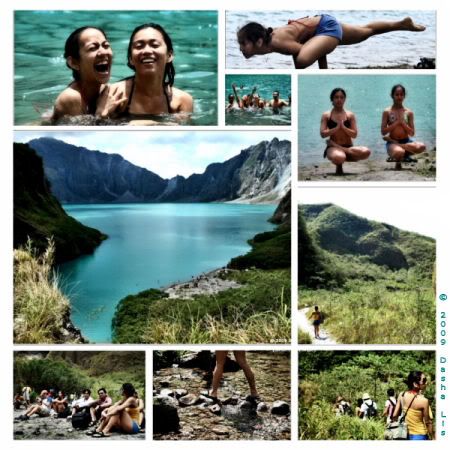
* Месяц два назад я наконец добралась до вулкана Пинатубо - несколько лет планировала это сделать ( и несколько месяцев об этом отчитаться). В компании со мной - любимые инструкторы по бикрам йоге, ходить в походы с которыми особое удовольствие, т.к. они любят продемонстрировать асаны на природе, на радость окружающим. Так что в этом посте о Пинатубо и йоге.
* Pictures in this post are from my trip to Pinatubo volcano, a hike that I have been thinking about doing for a couple of years but had neither time nor, most importantly, company, to accomplish it. I published these pictures in facebook a couple of months ago and got positive feedback from people (if you want to be my facebook friend - let me know). So I decided to post some here (and get some more positive energy again:))
1.
Вот он - кратер вулкана Пинатубо, красота к которой мы стремились. Немного предистории: Пинатубо находится в 89 километрах от Манилы. До 1991 года вулкан мирно спал, а весной 1991 года проснулся и начал пугать окружающее население (часть которого составляет народность Аэта) небольшими землетрясениями. К вулкану приехали сейсмологи и начали внимательно следить за поведением спящей горы. Понблюдали несколько месяцев и пришли к выводу, что в любой момент вулкан по-натоящему проснётся. Людей начали эвакуировать и этим спасли десятки тысяч жизней, так как вулкан произвёл колоссальное извержение в июне 1991 года.
Извержения начались 7 июня, a 15 июня произошёл грандиозный финал. Высота пепельного столба достигла 34 километра. Извержение Пинатубо - второе по величине (после извержения вулкана Новарупта в 1912 году) извержение в 20-ом веке. 10 кубических километров магмы было выплеснуто на поверхность, глобальная температура понизилась на 0.5 градуса.
Больше 800 человек погибли, в основном из-за рухнувших крыш домов, на которых накопился намокший пепел (намокший из-за того, что одновременно с извержением пришёл тайфун Юнья); более 8000 домов были полностью разрушены и более 73 тысяч повреждены.
После извержения в кратере вулкана образовалось озеро. Сначало озеро было маленьким, горячим (40 градусов) и очень кислотным (pH2). Дожди остудили и разбавили воду, и к 1993 году темперетура воды достигла 26 градусов, а кислотность - pH5.5 До сентября 2001 года вода в озере прибывала в среднем на 1 метр в месяц. Опасаясь за состояние стен кратера правительство приняло решение сливать воду. Прорезали 5-метровое отверстие на кайме кратера и слили четверть объёма водоёма. Теперь народ там плавает вовсю.|| Here it is - the beauty we aimed to see. Crater of Pinatubo volcano.Below is a brief information about Pinatubo for those very curious (from our favorite Wikipedia).
Pinatubo is located 89 km from Manila. It is an active volcano that produces a massive eruption in June 1991. That eruption is the second largest terrestrial eruption of the 20th century (after the 1912 eruption of Novarupta). The effects of the eruption were felt worldwide. It ejected roughly 10 billion metric tonnes (10 cubic kilometres) of magma, and 20 million tons of SO2, bringing vast quantities of minerals and metals to the surface environment. It injected large amounts of aerosols into the stratosphere-more than any eruption since that of Krakatoa in 1883. Global temperatures dropped by about 0.5 °C (0.9 °F), and ozone depletion temporarily increased substantially.
In total, about 30,000 people lived on the flanks of the volcano in villages and other small settlements. The dense jungle covering most of the mountain and surrounding peaks supported the hunter-gathering Aeta, while on the surrounding flatter areas, the abundant rainfall (almost 4 m annually) provided by the monsoon climate and the fertile volcanic soils provided excellent conditions for agriculture, and many people grew rice and other staple foods.
An indigenous group of people, the Aetas (also spelled as Ayta), had lived on the slopes of the volcano and in surrounding areas for several centuries, having fled the lowlands to escape persecution by the Spanish. They were a hunter-gatherer people who were extremely successful in surviving in the dense jungles of the area.
Many of the Aeta who lived on the slopes of the volcano left their villages of their own volition when the first explosions began in April, gathering in a village about 12 km from the summit. They moved to increasingly distant villages as the eruptions escalated, with some Aeta moving up to nine times in the two months preceding the cataclysmic eruption.
June 15, 1991 saw the onset of the climactic eruption. On the same day, Typhoon Yunya struck the island, passing about 75 km north of the volcano. The typhoon rains made direct visual observations of the eruption impossible, but measurements showed that ash was ejected to heights of 34 km by the most violent phase of the eruption, which lasted about three hours.
Over 800 people were killed by the eruption,mostly by roofs collapsing under the weight of accumulated wet ash, a hazard that was greatly exacerbated by the simultaneous arrival of Typhoon Yunya. The evacuation in the days preceding the eruption certainly saved tens of thousands of lives, and has been hailed as a great success for volcanology and eruption prediction.
In total, 364 communities and 2.1 million people were affected by the eruption, with livelihoods and houses being damaged or destroyed. More than 8,000 houses were completely destroyed, and a further 73,000 were damaged.
After eruptions ended, a crater lake, Lake Pinatubo, formed in the 1991 caldera, with the 1992 lava dome forming an island. At first, the lake was small, hot and highly acidic, with a minimum pH of 2 and a temperature of about 40 °C. Abundant rainfall cooled and diluted the lake, lowering the temperature to 26 °C and raising the pH to 5.5 by 2003.
The lake increased in depth by about 1 meter per month on average, until September 2001, when fears that the walls of the crater might be unstable prompted the Philippine government to order a controlled draining of the lake. 9,000 people were once again evacuated from surrounding areas in case a large flood was accidentally triggered. Workers cut a 5 m notch in the crater rim, and successfully drained about a quarter of the lake's volume.
So here it is, Lake Pinatubo. Was this beauty worth all the deaths?
2.
Пробираться к озеру и вулкану «дикарями» нельзя. Все подъезды к горе охраняются доблестной армией. На машине нужно доехать до перевалочного пункта (который с ростом количества туристов превратился в своеобразный сауну-ресторан), заплатить энное количество денег, пересесть на джип (в стиле «ура, мы едем на сафари!»), шофёр которого через час доставит вас к подножью горы и отдаст в руки проводника. А дальше полчаса по таким вот камням - и вы наверху, у кратера. || It is not possible to access Pinatubo volcano on your own. The last part of your journey is done under the supervision of a guide. Stream and rocks make most of the way. Nothing dangerous, just fun.
3.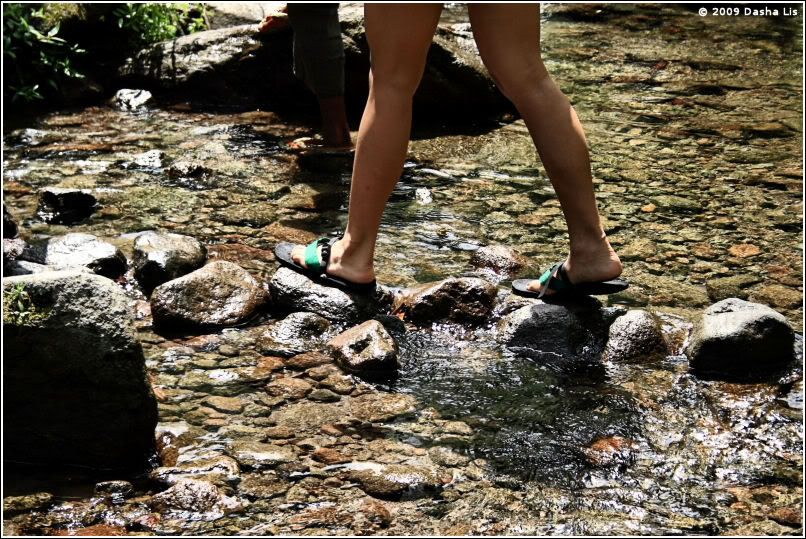
Перед походом у нас развернулись горячие дебаты: в какой обуви идти. Я предпочитаю закрытую походную обувь, многие же настаивали на «походных сандалях». В итоге - спор был не нужен. Я в закрытой, нескользкой обуви с камней не соскользнула и ног не намочила; «сандальная партия» шлёпала по воде и тоже была довольна. || Just before this hike we had a debate about appropriate footwear for the hike. A lot of people insisted on “hiking sandals” knowing that there would be water on our way; I am only comfortable hiking in closed-toes footwear. At the end both parties were happy. I never slipped from any rock and remained with dry feet till the end of the journey; “sandal party” was happy too - they just walked in a cool stream!
4.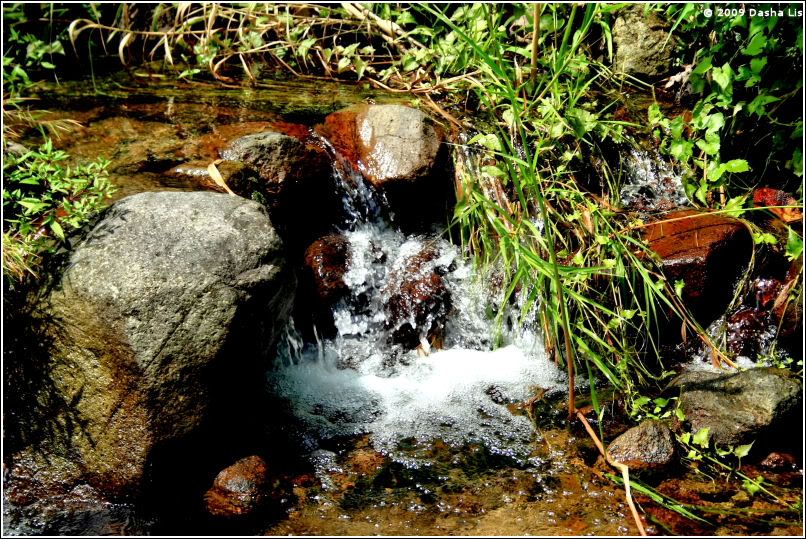
Чистая бегущая вода...В Маниле нам такое и не снилось. || Clean running water…Pasig dreaming.
5.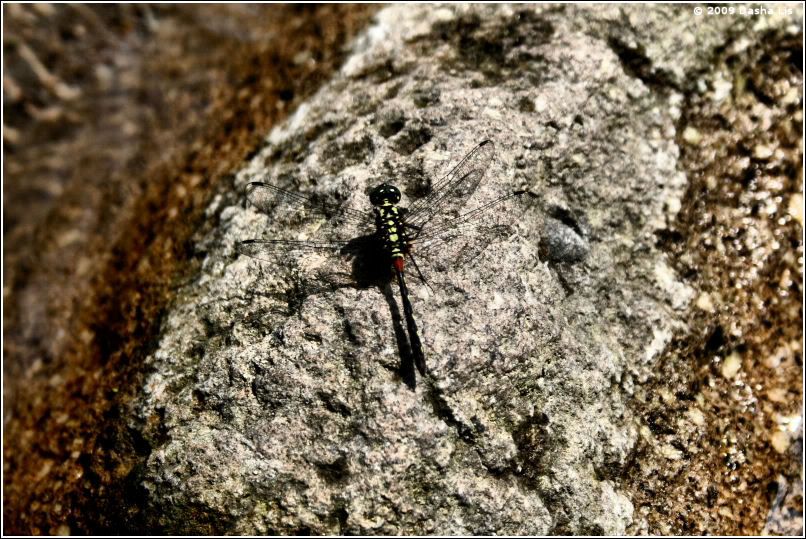
Cпутница || Fellow traveler.
6.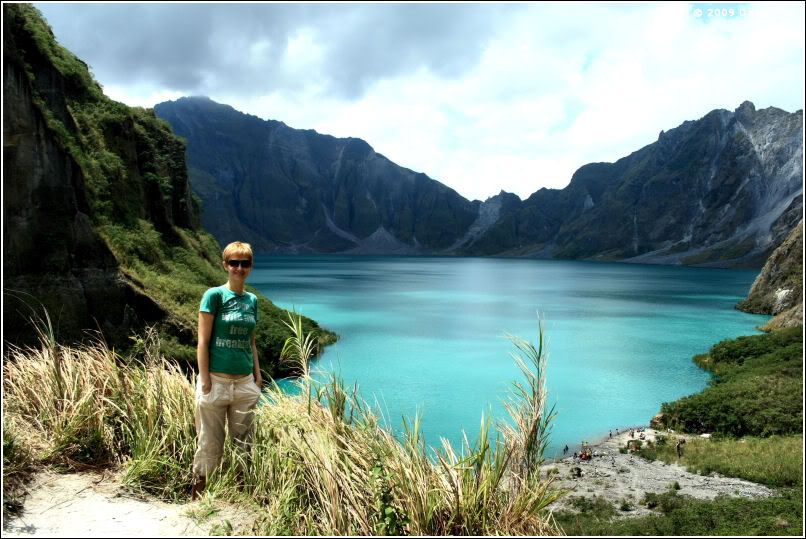
Вот я, на самом верху. Красота, конечно, стоила прогулки по мокрым камням по жаре. || That’s me at the top of the mountain : ) the view, obviously, was worth the walk through slippery rocks in the heat.
7.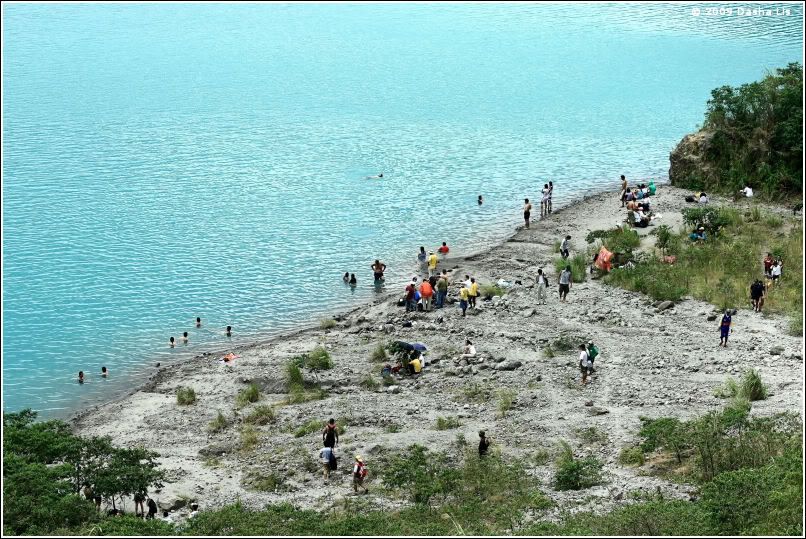
Народ в озере во всю купается и безответственно вытаптывает всю прибрежную траву. || From the top of the crater the lack of grass near the shore (as a result of human unstoppable desire to jump into turquoise water) is obvious, yet it doesn’t really concern anybody.
8.
В свободном плавании || Free-drifter
9.
Ах, какая прелесть это озеро! || Cold, turquoise, fresh…love it!
10.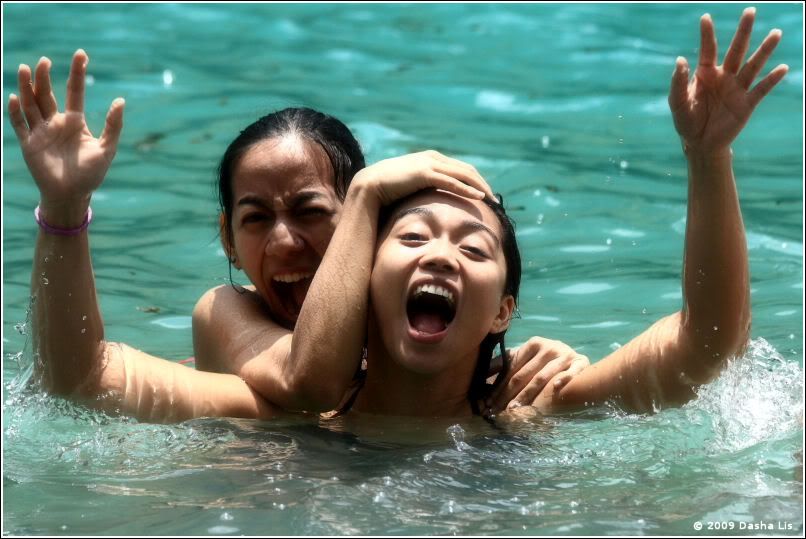
Тонуть, так вместе! || I’m gonna sink to the bottom with you!
11.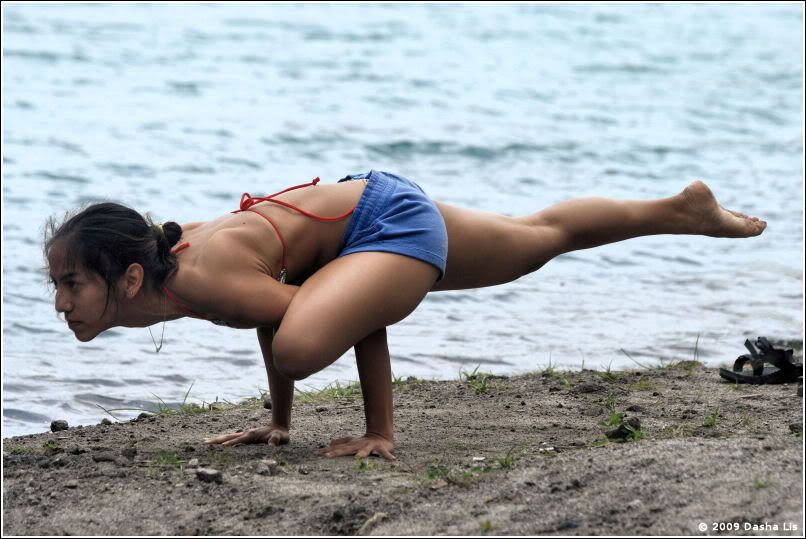
Немного левитации после купания - то, что нужно :) || The best thing after swimming in cold water is a little bit of levitation :)
12.
Для тебя, Пинатубо! || I dance for you, Pinatubo!
13.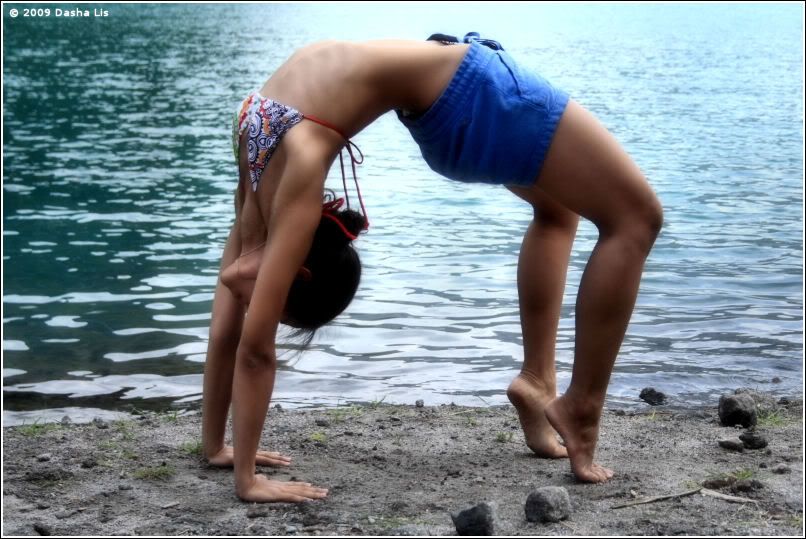
Мост через озеро || Perfect human bridge
14.
Или лучше так? || Or is this more perfect than previous perfect?
15.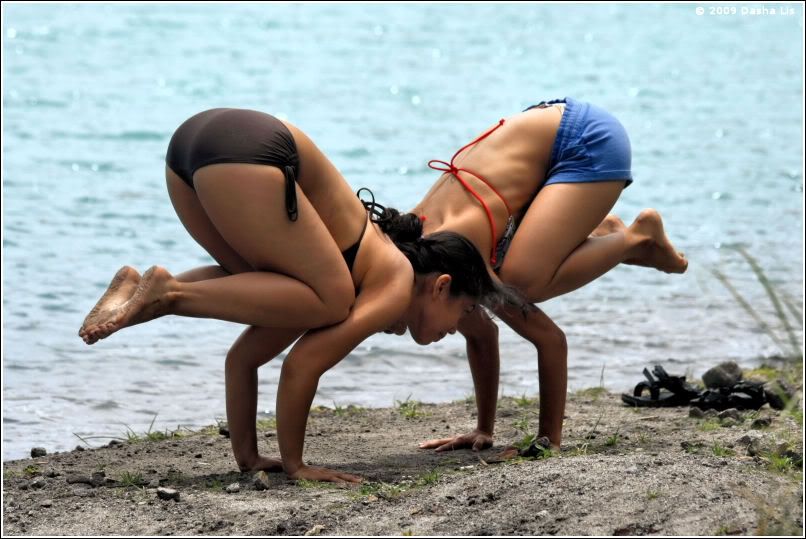
Человек-паук || What’s your idea of symmetry?
16.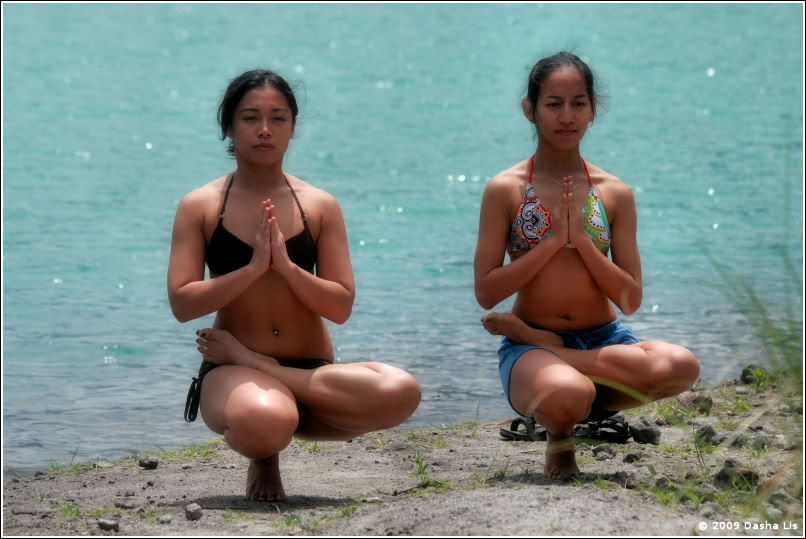
На пятке они, между прочим, не сидят, а удерживают тело на весу || I have a feeling they would be really good at Ukrainian dancing :)
17.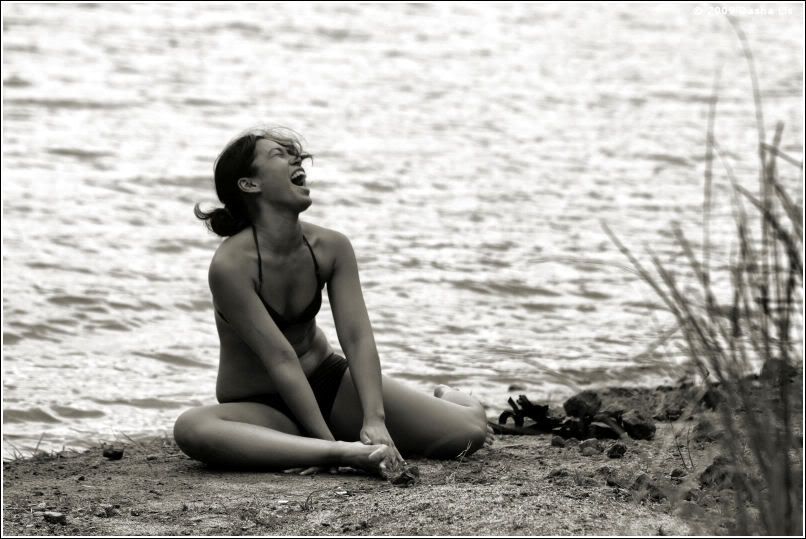
Камни - это вам не мягкий йожный коврик на ровненьком полу || Yoga on the rocks tickles!
18.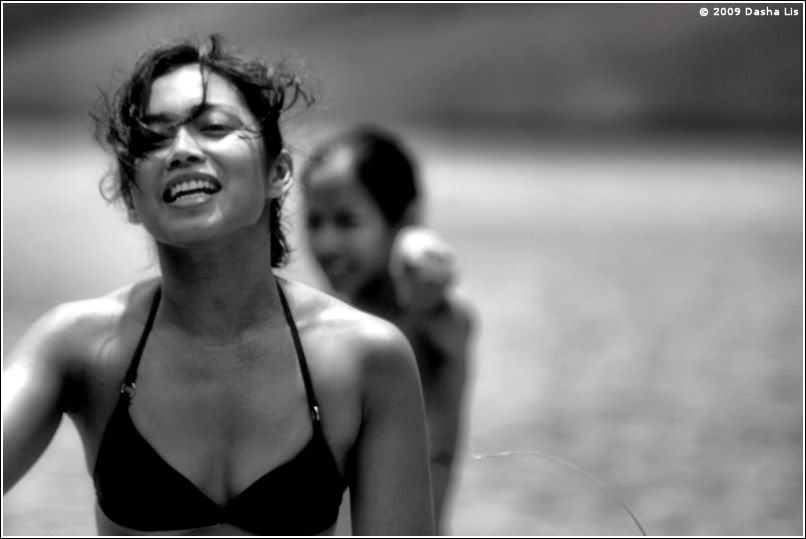
Cтоп. Ты куда? Мы ещё не выяснили, кто же всё-таки лучше :) || Wait. Where are you going? Our challenge is not over yet!
19.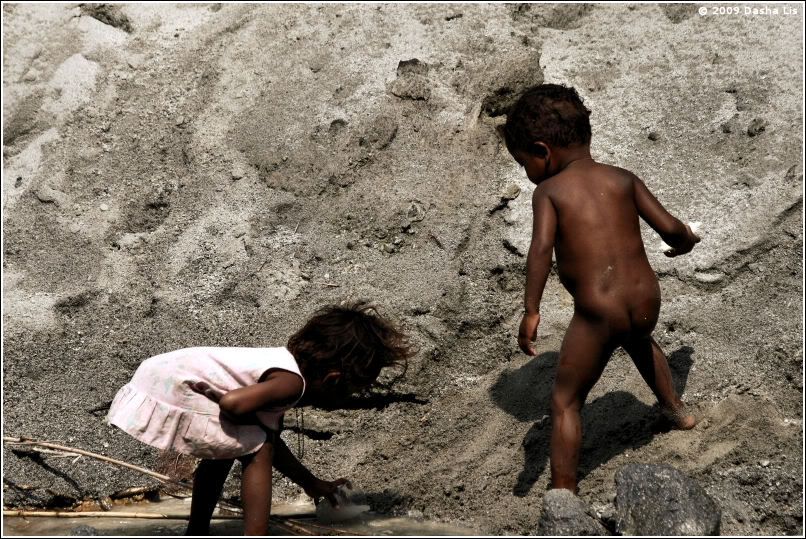
Дети Аэта. || Aeta children playing in the stream.
20.
Ради Аэта мне бы хотелось вернуться на Пинатубо || I would love to come to Pinatubo and spend some time with Aeta people.
21.
Ну и ради этой красоты тоже, наверное || Good bye, majestic beauty!

* Месяц два назад я наконец добралась до вулкана Пинатубо - несколько лет планировала это сделать ( и несколько месяцев об этом отчитаться). В компании со мной - любимые инструкторы по бикрам йоге, ходить в походы с которыми особое удовольствие, т.к. они любят продемонстрировать асаны на природе, на радость окружающим. Так что в этом посте о Пинатубо и йоге.
* Pictures in this post are from my trip to Pinatubo volcano, a hike that I have been thinking about doing for a couple of years but had neither time nor, most importantly, company, to accomplish it. I published these pictures in facebook a couple of months ago and got positive feedback from people (if you want to be my facebook friend - let me know). So I decided to post some here (and get some more positive energy again:))
1.

Вот он - кратер вулкана Пинатубо, красота к которой мы стремились. Немного предистории: Пинатубо находится в 89 километрах от Манилы. До 1991 года вулкан мирно спал, а весной 1991 года проснулся и начал пугать окружающее население (часть которого составляет народность Аэта) небольшими землетрясениями. К вулкану приехали сейсмологи и начали внимательно следить за поведением спящей горы. Понблюдали несколько месяцев и пришли к выводу, что в любой момент вулкан по-натоящему проснётся. Людей начали эвакуировать и этим спасли десятки тысяч жизней, так как вулкан произвёл колоссальное извержение в июне 1991 года.
Извержения начались 7 июня, a 15 июня произошёл грандиозный финал. Высота пепельного столба достигла 34 километра. Извержение Пинатубо - второе по величине (после извержения вулкана Новарупта в 1912 году) извержение в 20-ом веке. 10 кубических километров магмы было выплеснуто на поверхность, глобальная температура понизилась на 0.5 градуса.
Больше 800 человек погибли, в основном из-за рухнувших крыш домов, на которых накопился намокший пепел (намокший из-за того, что одновременно с извержением пришёл тайфун Юнья); более 8000 домов были полностью разрушены и более 73 тысяч повреждены.
После извержения в кратере вулкана образовалось озеро. Сначало озеро было маленьким, горячим (40 градусов) и очень кислотным (pH2). Дожди остудили и разбавили воду, и к 1993 году темперетура воды достигла 26 градусов, а кислотность - pH5.5 До сентября 2001 года вода в озере прибывала в среднем на 1 метр в месяц. Опасаясь за состояние стен кратера правительство приняло решение сливать воду. Прорезали 5-метровое отверстие на кайме кратера и слили четверть объёма водоёма. Теперь народ там плавает вовсю.|| Here it is - the beauty we aimed to see. Crater of Pinatubo volcano.Below is a brief information about Pinatubo for those very curious (from our favorite Wikipedia).
Pinatubo is located 89 km from Manila. It is an active volcano that produces a massive eruption in June 1991. That eruption is the second largest terrestrial eruption of the 20th century (after the 1912 eruption of Novarupta). The effects of the eruption were felt worldwide. It ejected roughly 10 billion metric tonnes (10 cubic kilometres) of magma, and 20 million tons of SO2, bringing vast quantities of minerals and metals to the surface environment. It injected large amounts of aerosols into the stratosphere-more than any eruption since that of Krakatoa in 1883. Global temperatures dropped by about 0.5 °C (0.9 °F), and ozone depletion temporarily increased substantially.
In total, about 30,000 people lived on the flanks of the volcano in villages and other small settlements. The dense jungle covering most of the mountain and surrounding peaks supported the hunter-gathering Aeta, while on the surrounding flatter areas, the abundant rainfall (almost 4 m annually) provided by the monsoon climate and the fertile volcanic soils provided excellent conditions for agriculture, and many people grew rice and other staple foods.
An indigenous group of people, the Aetas (also spelled as Ayta), had lived on the slopes of the volcano and in surrounding areas for several centuries, having fled the lowlands to escape persecution by the Spanish. They were a hunter-gatherer people who were extremely successful in surviving in the dense jungles of the area.
Many of the Aeta who lived on the slopes of the volcano left their villages of their own volition when the first explosions began in April, gathering in a village about 12 km from the summit. They moved to increasingly distant villages as the eruptions escalated, with some Aeta moving up to nine times in the two months preceding the cataclysmic eruption.
June 15, 1991 saw the onset of the climactic eruption. On the same day, Typhoon Yunya struck the island, passing about 75 km north of the volcano. The typhoon rains made direct visual observations of the eruption impossible, but measurements showed that ash was ejected to heights of 34 km by the most violent phase of the eruption, which lasted about three hours.
Over 800 people were killed by the eruption,mostly by roofs collapsing under the weight of accumulated wet ash, a hazard that was greatly exacerbated by the simultaneous arrival of Typhoon Yunya. The evacuation in the days preceding the eruption certainly saved tens of thousands of lives, and has been hailed as a great success for volcanology and eruption prediction.
In total, 364 communities and 2.1 million people were affected by the eruption, with livelihoods and houses being damaged or destroyed. More than 8,000 houses were completely destroyed, and a further 73,000 were damaged.
After eruptions ended, a crater lake, Lake Pinatubo, formed in the 1991 caldera, with the 1992 lava dome forming an island. At first, the lake was small, hot and highly acidic, with a minimum pH of 2 and a temperature of about 40 °C. Abundant rainfall cooled and diluted the lake, lowering the temperature to 26 °C and raising the pH to 5.5 by 2003.
The lake increased in depth by about 1 meter per month on average, until September 2001, when fears that the walls of the crater might be unstable prompted the Philippine government to order a controlled draining of the lake. 9,000 people were once again evacuated from surrounding areas in case a large flood was accidentally triggered. Workers cut a 5 m notch in the crater rim, and successfully drained about a quarter of the lake's volume.
So here it is, Lake Pinatubo. Was this beauty worth all the deaths?
2.

Пробираться к озеру и вулкану «дикарями» нельзя. Все подъезды к горе охраняются доблестной армией. На машине нужно доехать до перевалочного пункта (который с ростом количества туристов превратился в своеобразный сауну-ресторан), заплатить энное количество денег, пересесть на джип (в стиле «ура, мы едем на сафари!»), шофёр которого через час доставит вас к подножью горы и отдаст в руки проводника. А дальше полчаса по таким вот камням - и вы наверху, у кратера. || It is not possible to access Pinatubo volcano on your own. The last part of your journey is done under the supervision of a guide. Stream and rocks make most of the way. Nothing dangerous, just fun.
3.

Перед походом у нас развернулись горячие дебаты: в какой обуви идти. Я предпочитаю закрытую походную обувь, многие же настаивали на «походных сандалях». В итоге - спор был не нужен. Я в закрытой, нескользкой обуви с камней не соскользнула и ног не намочила; «сандальная партия» шлёпала по воде и тоже была довольна. || Just before this hike we had a debate about appropriate footwear for the hike. A lot of people insisted on “hiking sandals” knowing that there would be water on our way; I am only comfortable hiking in closed-toes footwear. At the end both parties were happy. I never slipped from any rock and remained with dry feet till the end of the journey; “sandal party” was happy too - they just walked in a cool stream!
4.

Чистая бегущая вода...В Маниле нам такое и не снилось. || Clean running water…Pasig dreaming.
5.

Cпутница || Fellow traveler.
6.

Вот я, на самом верху. Красота, конечно, стоила прогулки по мокрым камням по жаре. || That’s me at the top of the mountain : ) the view, obviously, was worth the walk through slippery rocks in the heat.
7.

Народ в озере во всю купается и безответственно вытаптывает всю прибрежную траву. || From the top of the crater the lack of grass near the shore (as a result of human unstoppable desire to jump into turquoise water) is obvious, yet it doesn’t really concern anybody.
8.

В свободном плавании || Free-drifter
9.

Ах, какая прелесть это озеро! || Cold, turquoise, fresh…love it!
10.

Тонуть, так вместе! || I’m gonna sink to the bottom with you!
11.

Немного левитации после купания - то, что нужно :) || The best thing after swimming in cold water is a little bit of levitation :)
12.

Для тебя, Пинатубо! || I dance for you, Pinatubo!
13.

Мост через озеро || Perfect human bridge
14.

Или лучше так? || Or is this more perfect than previous perfect?
15.

Человек-паук || What’s your idea of symmetry?
16.

На пятке они, между прочим, не сидят, а удерживают тело на весу || I have a feeling they would be really good at Ukrainian dancing :)
17.

Камни - это вам не мягкий йожный коврик на ровненьком полу || Yoga on the rocks tickles!
18.

Cтоп. Ты куда? Мы ещё не выяснили, кто же всё-таки лучше :) || Wait. Where are you going? Our challenge is not over yet!
19.

Дети Аэта. || Aeta children playing in the stream.
20.

Ради Аэта мне бы хотелось вернуться на Пинатубо || I would love to come to Pinatubo and spend some time with Aeta people.
21.

Ну и ради этой красоты тоже, наверное || Good bye, majestic beauty!